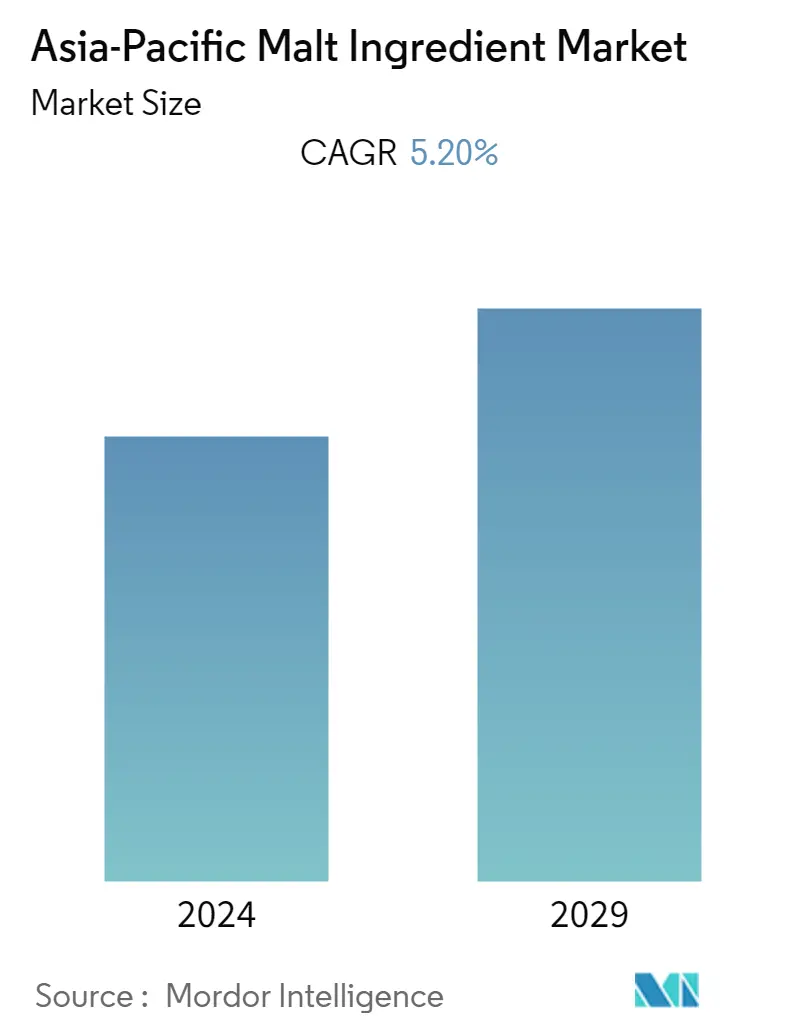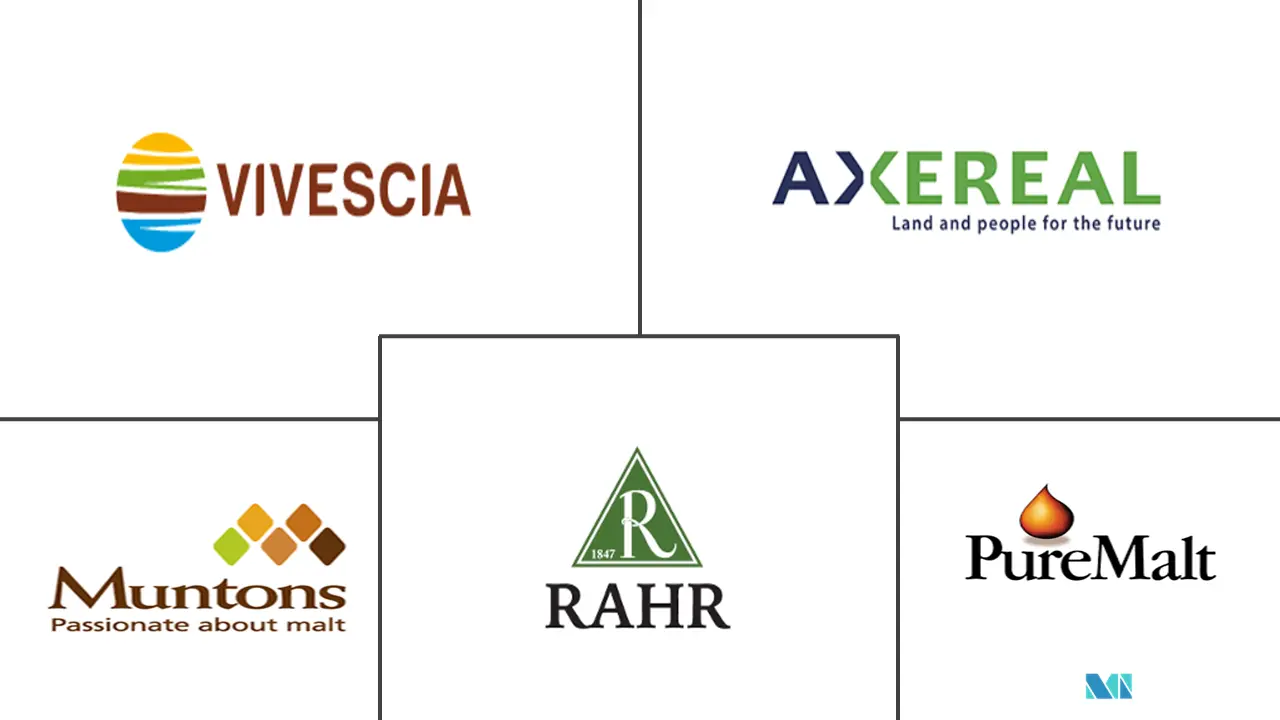Market Size of Asia-Pacific Malt Ingredient Industry

| Study Period | 2019 - 2029 |
| Base Year For Estimation | 2023 |
| Forecast Data Period | 2024 - 2029 |
| Historical Data Period | 2019 - 2022 |
| CAGR | 5.20 % |
| Market Concentration | Low |
Major Players
*Disclaimer: Major Players sorted in no particular order |
Need a report that reflects how COVID-19 has impacted this market and its growth?
Asia Pacific Malt Ingredient Market Analysis
The Asia-Pacific malt ingredient market is expected to record a CAGR of 5.2% during the forecast period.
Malt has been a primary ingredient for applications in the brewing industry for decades. With the growing awareness about its benefits, malt has tapped into the food industry as an additive, flavor, colorant, and ingredient. Moreover, the high consumption of this ingredient in the feed industry is further aiding the market studied. Barley remains the most preferred source of malt for application in the beverage industry, owing to its unique enzyme property and relatively better taste profiles.
Moreover, natural substances are increasingly in demand for usage in a variety of dermatological and cosmetic applications. To fulfill the naturalness of components, these elements frequently act as substitutes for dangerous synthetic raw materials or non-sustainable generated raw materials. To increase bioactivity in cosmetic applications, malt, one of the most significant ingredients in the brewing business, comprises a variety of substances, including phenolic compounds and melanoidins. In addition, malt includes smaller phenolic compounds with strong antioxidant effects, including procyanidins, lignans, alkylphenols, and derivatives of the cinnamic acid.
Furthermore, many baked foods contain malt powder or malt flour, which adds a natural sweetness to the baked products and imparts a brighter and browner result. There are two varieties of malt powder. Diastatic malt contains enzymes that break down starches into sugar and typically produce sweeter, smoother, and higher-rising baked items. Non-diastatic malt is considerably more typical but lacks enzymes. This can nonetheless provide baked items with a desirable flavor and appearance.
